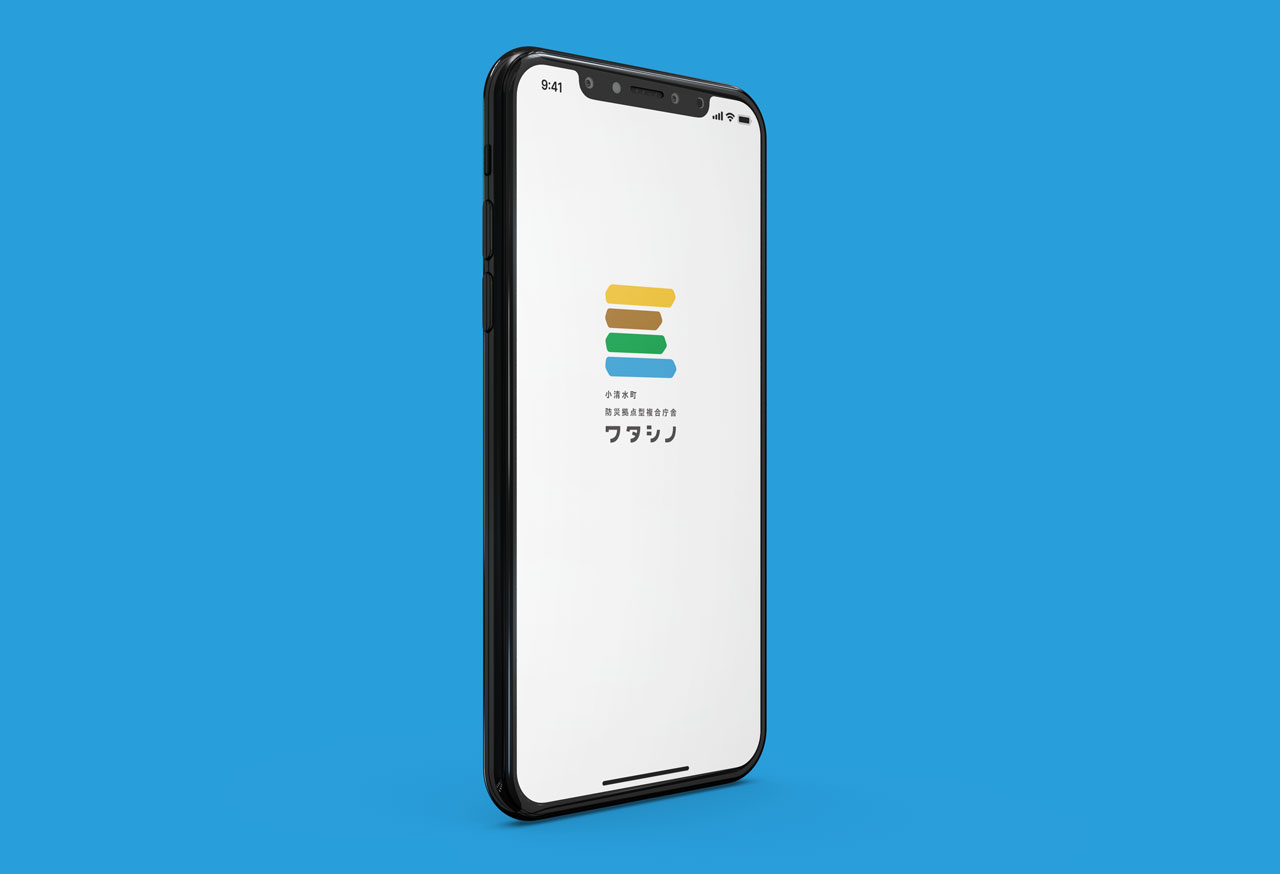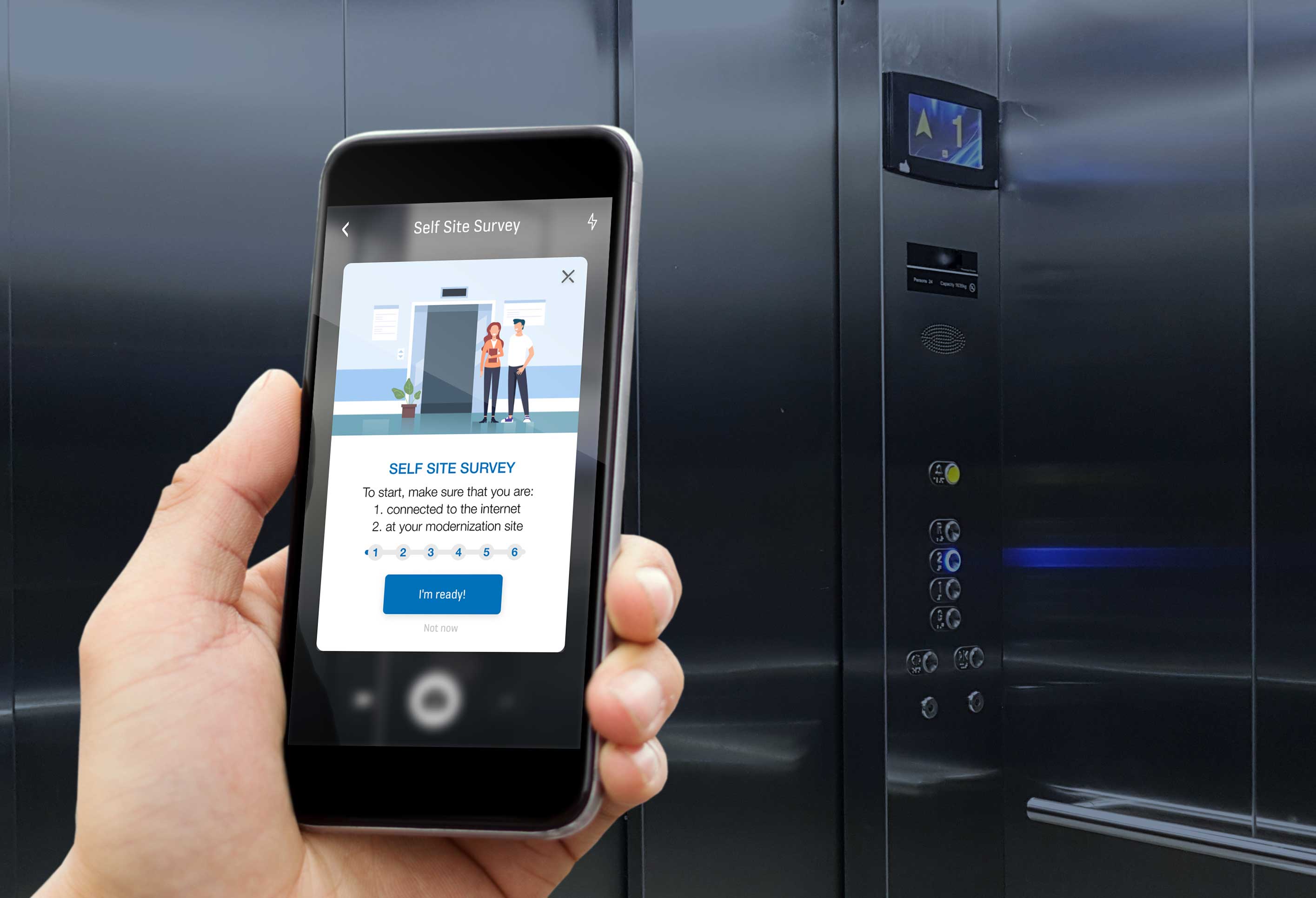Brand Chatbot's Personality The impact of chatbot’s personality on the user’s brand personality perception
Abstract
The aim of my MA thesis was to investigate the impact of a chatbot’s personality on the user’s perception of brand personality. Two brands, and their chatbots, are used as case studies. The empirical study comprised of two stages, in which both the qualitative and the quantitative data were gathered and analyzed. Based on the study findings, design considerations are suggested to help practitioners in designing brand chatbots.
-
Date :
2019
-
Context :
MA thesis
-
Role :
Conducting user research, developing chatbot prototypes using Botsociety, and performing qualitative data analysis and statistical analysis(SPSS)
-
Publication :
Park, S., Roto, V. (2019) Designing brand chatbots: The impact of chatbot’s personality on the user’s brand personality perception (Master’s thesis, Aalto University, Espoo, Finland). URL: http://urn.fi/URN:NBN:fi:aalto-202001261762
INTRODUCTION
Research Questions
According to Oracle(2016), more brands are implementing chatbots these days. With the wide adoption of chatbots by brands, the impact of chatbot's personality on the user's brand perception is expected to be increased (Araujo, 2018). This study aimed to investigate the impact of chatbot's personality on brand personality by finding answers to the following research questions:
-
1. Can the personality of a chatbot have an impact on the user's perception of the brand personality?
-
2. What are the underlying elements of the chatbot that shape its personality?
-
3. What can a designer do to ensure that a chatbot's personality reflects the brand personality?
Research Structure
The study comprises three stages: a literature review, a survey, and an interview with the experiment. In the second and third stages of the study, empirical data are collected and analyzed.
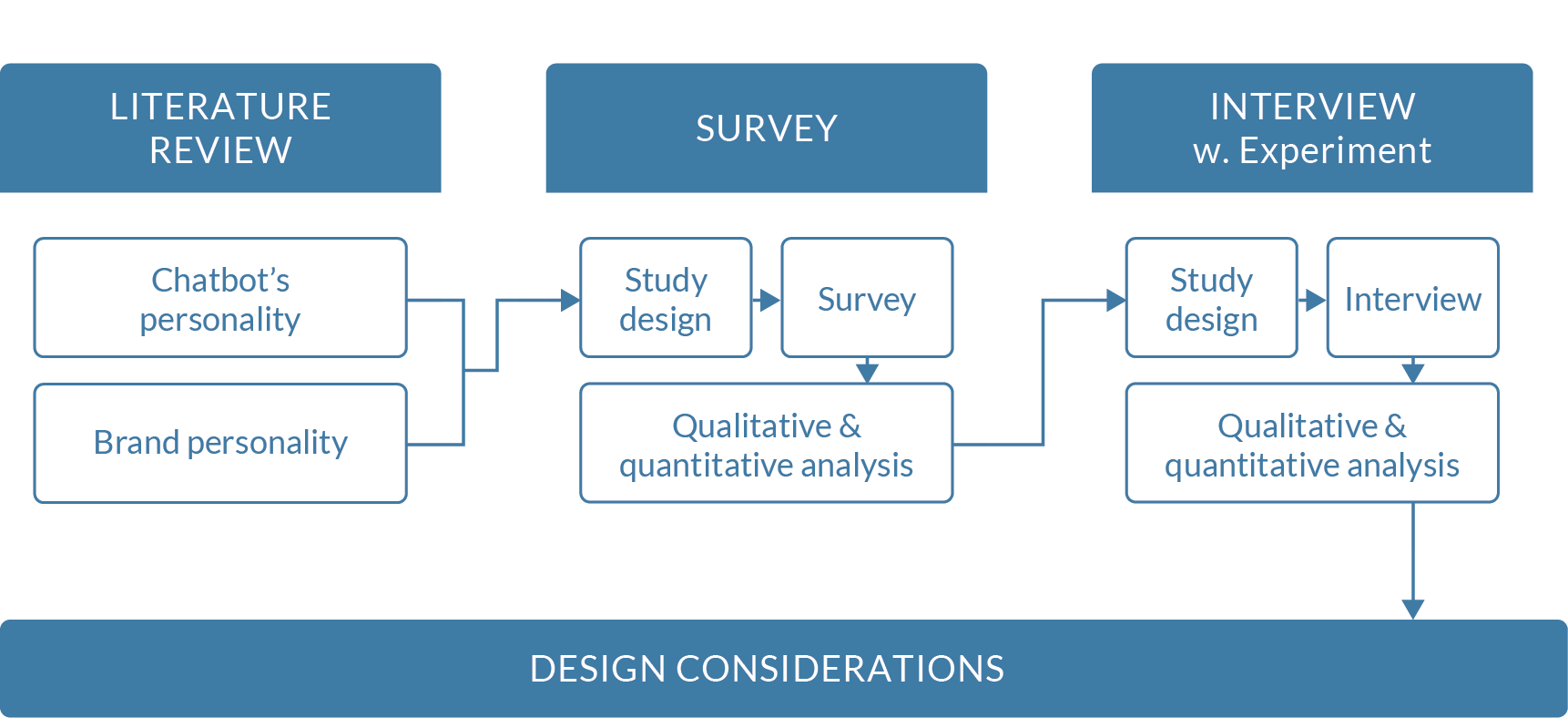
STUDY DESIGN
Empirical Research
A two-phase empirical research study was carried out to investigate the impact of chatbot's personality on the user's brand personality perception with the real cases. Two widely known brands, Lego and Finnair, and their chatbots were selected as cases.
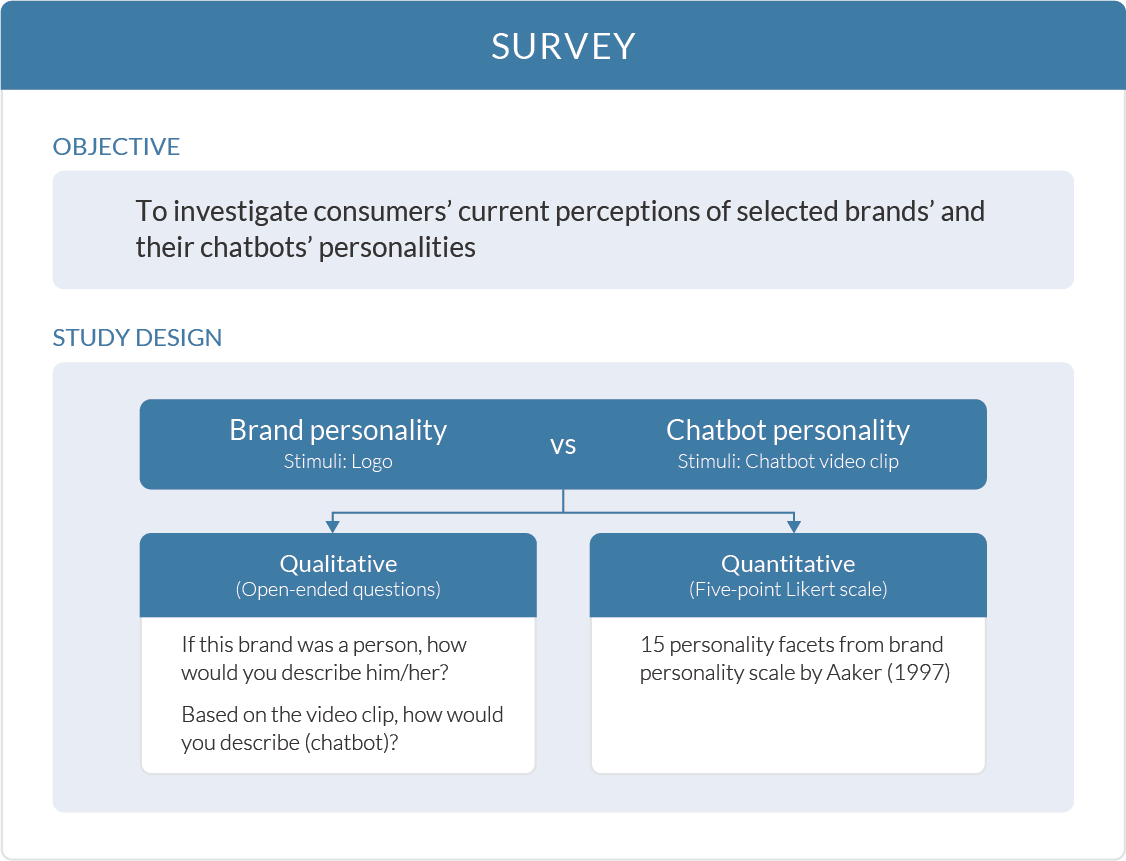
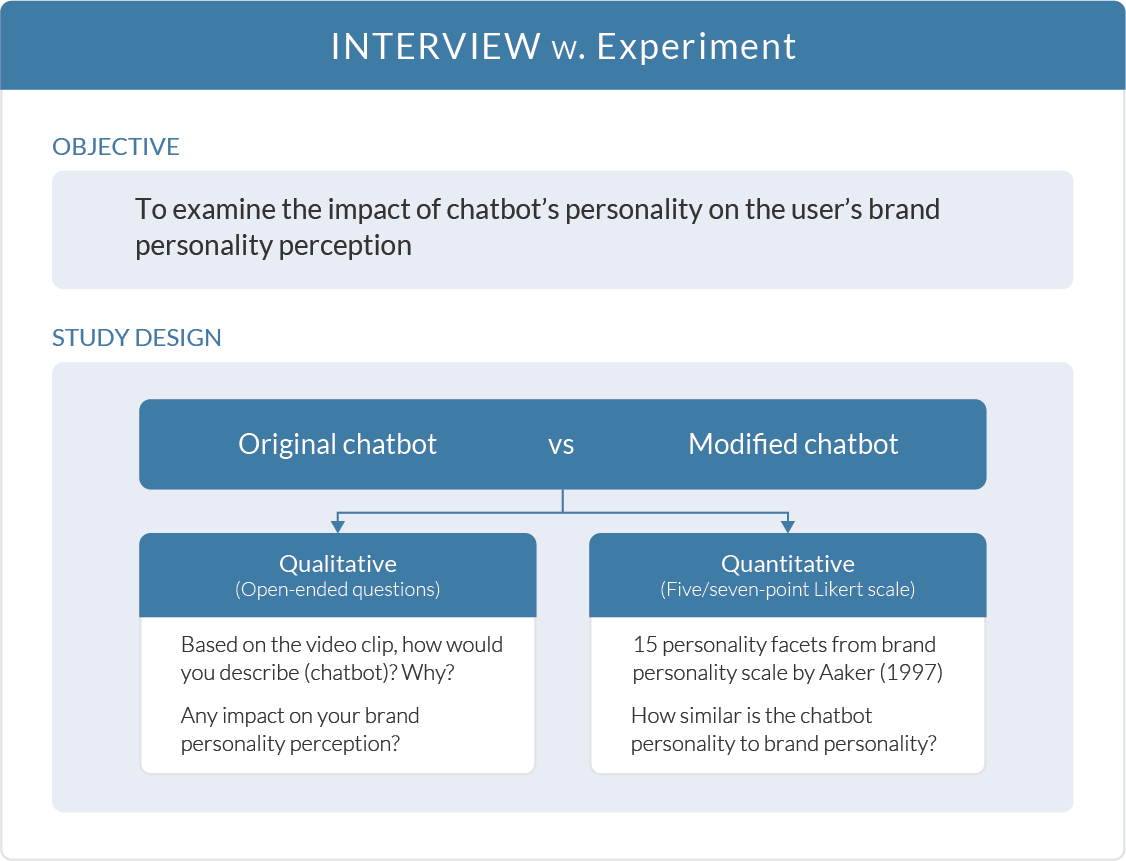
1st stage: survey
2nd stage: interview with experiment
SURVEY
Survey Design
The aim of the first phase study was to investigate and compare consumers' current perceptions of brand and chatbot personality. In the survey, the respondents were asked to describe and evaluate brand and chatbot personality. The logo and video clip of each brand were shown as stimuli.
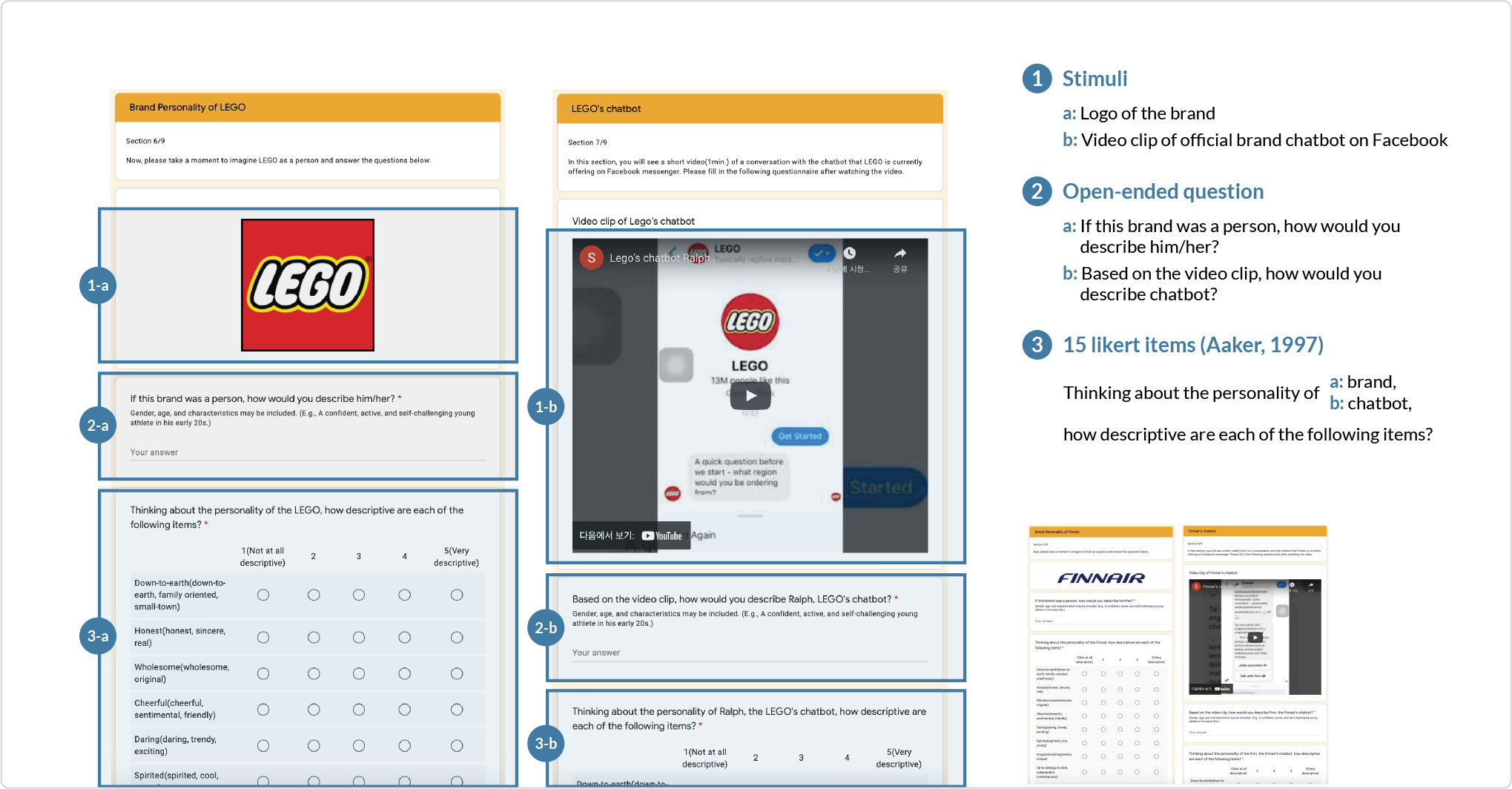
Key questions of the online survey
Analysis
As both the qualitative and quantitative research methods were mixed in the survey, the data analysis was performed in two ways. Qualitative data were analyzed by affinity diagramming, and the quantitative data were analyzed with SPSS. As a result, the brand personality and chatbot personality of Lego and Finnair were compared. The survey results indicated that Lego's brand and chatbot personality are in line with each other, whereas Finnair showed a gap between its brand and chatbot personality in the sophistication dimension.
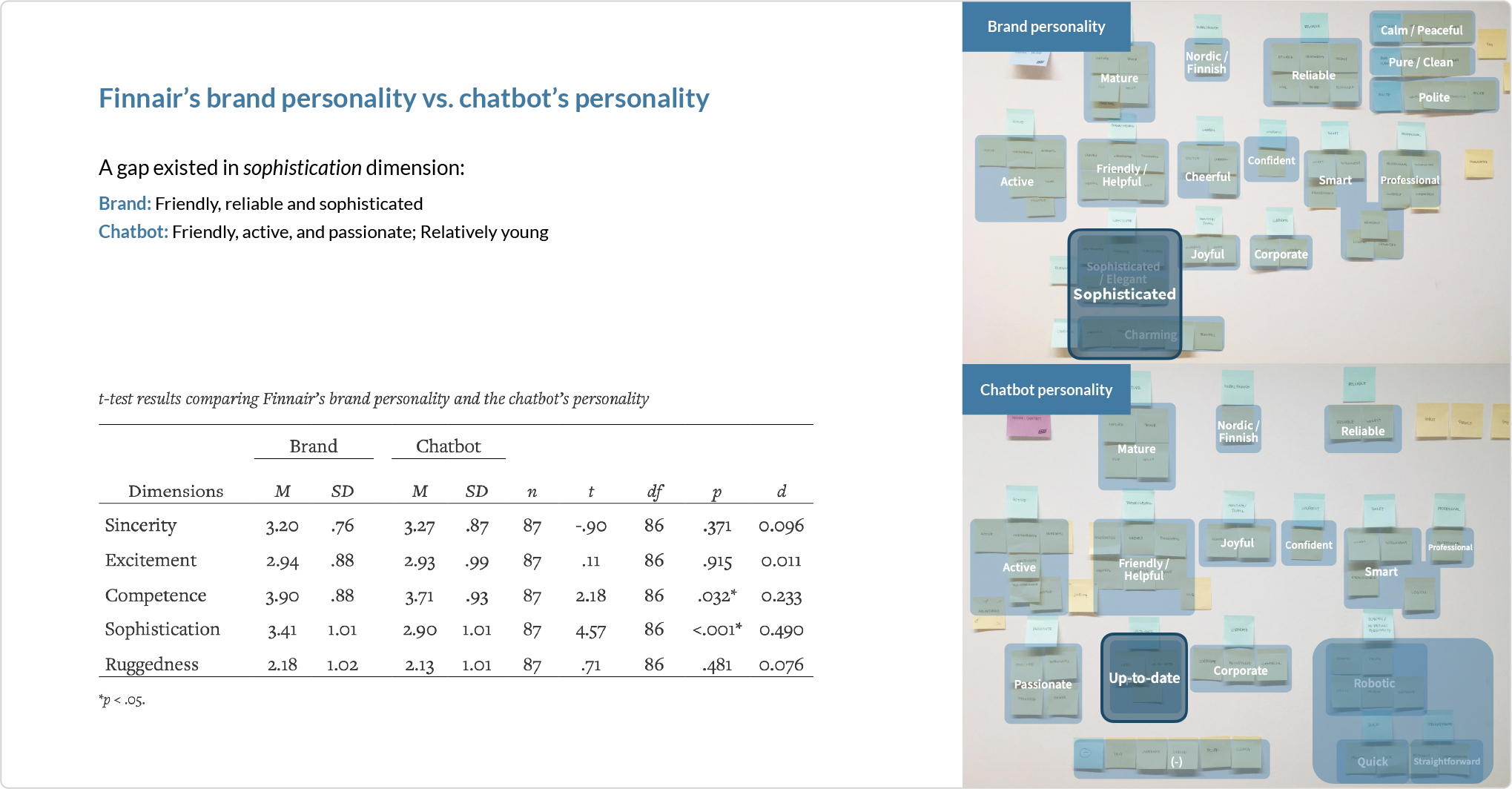
Summary of survey data analysis: Finnair
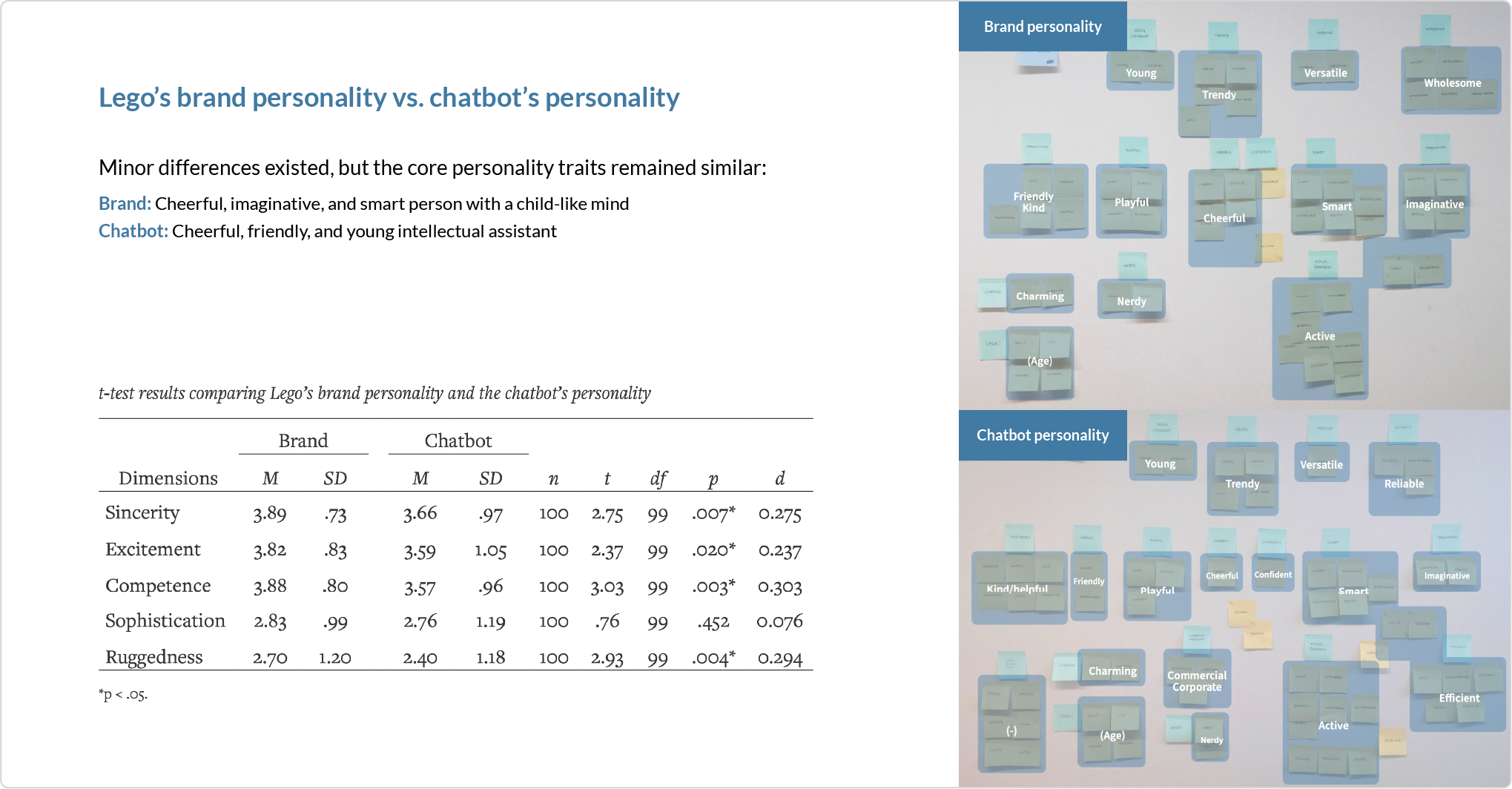
Summary of survey data analysis: Lego
INTERVIEW
Experimental Design
The second phase of the research was continued to further study the case of Finnair, to examine the gap between the brand and chatbot personality and impact on the brand personality. The interview included a small testing session, in which the research participants conversed with two chatbot prototypes and compared them to each other and to the brand personality.
One prototype was identical to the current Finnair's chatbot in Facebook Messenger, and the other prototype was modified to have a personality that is similar to Finnair's brand personality identified in the survey.
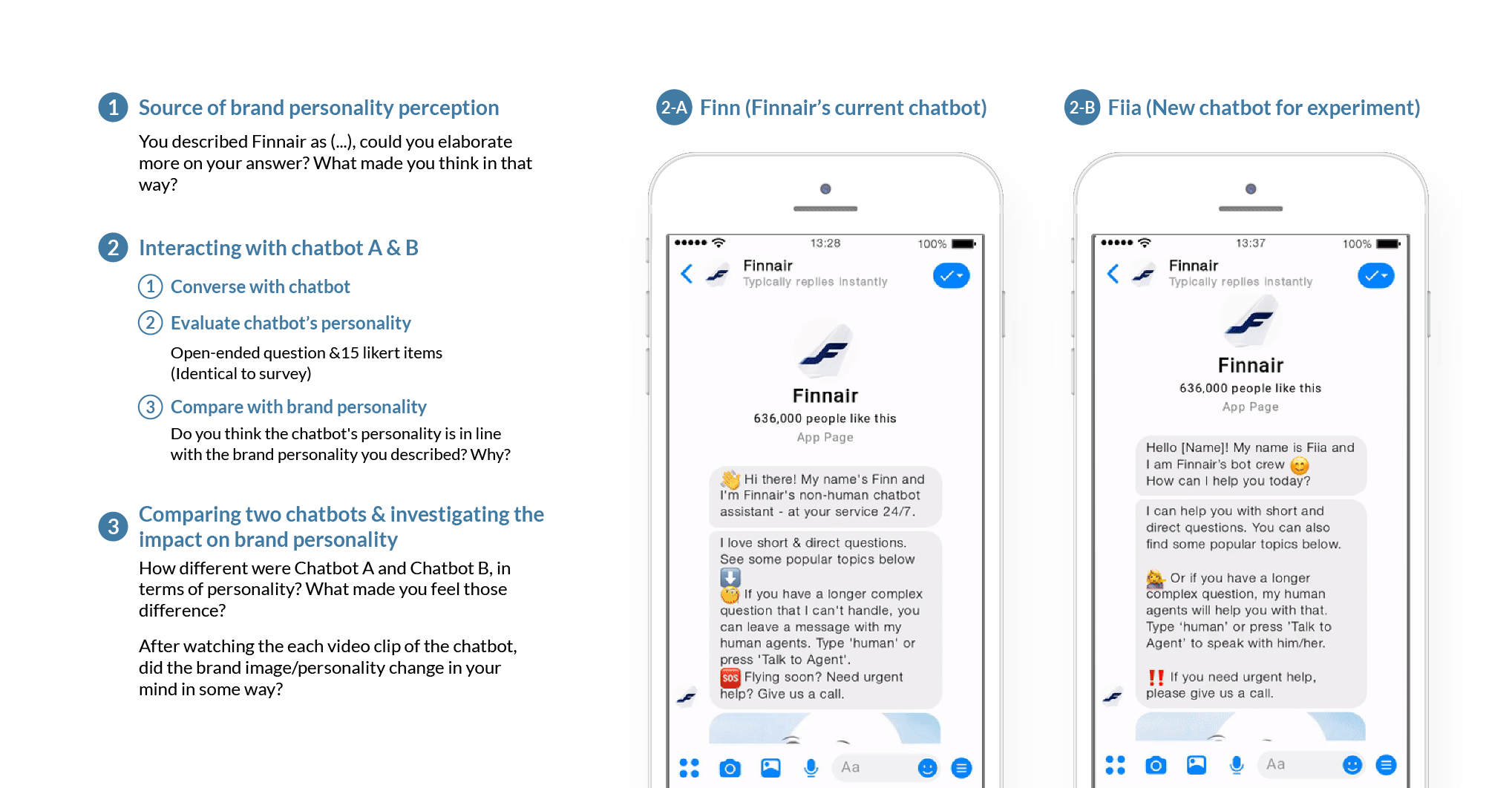
Structure of the interview and prototypes
Analysis
Same as the survey, the data analysis was performed in two ways. The study findings confirmed that people distinguish chatbots' personalities by reading different social cues the chatbot uses (Isbister & Nass, 2000) and revealed that the chatbot's personality may have an impact on brand personality.
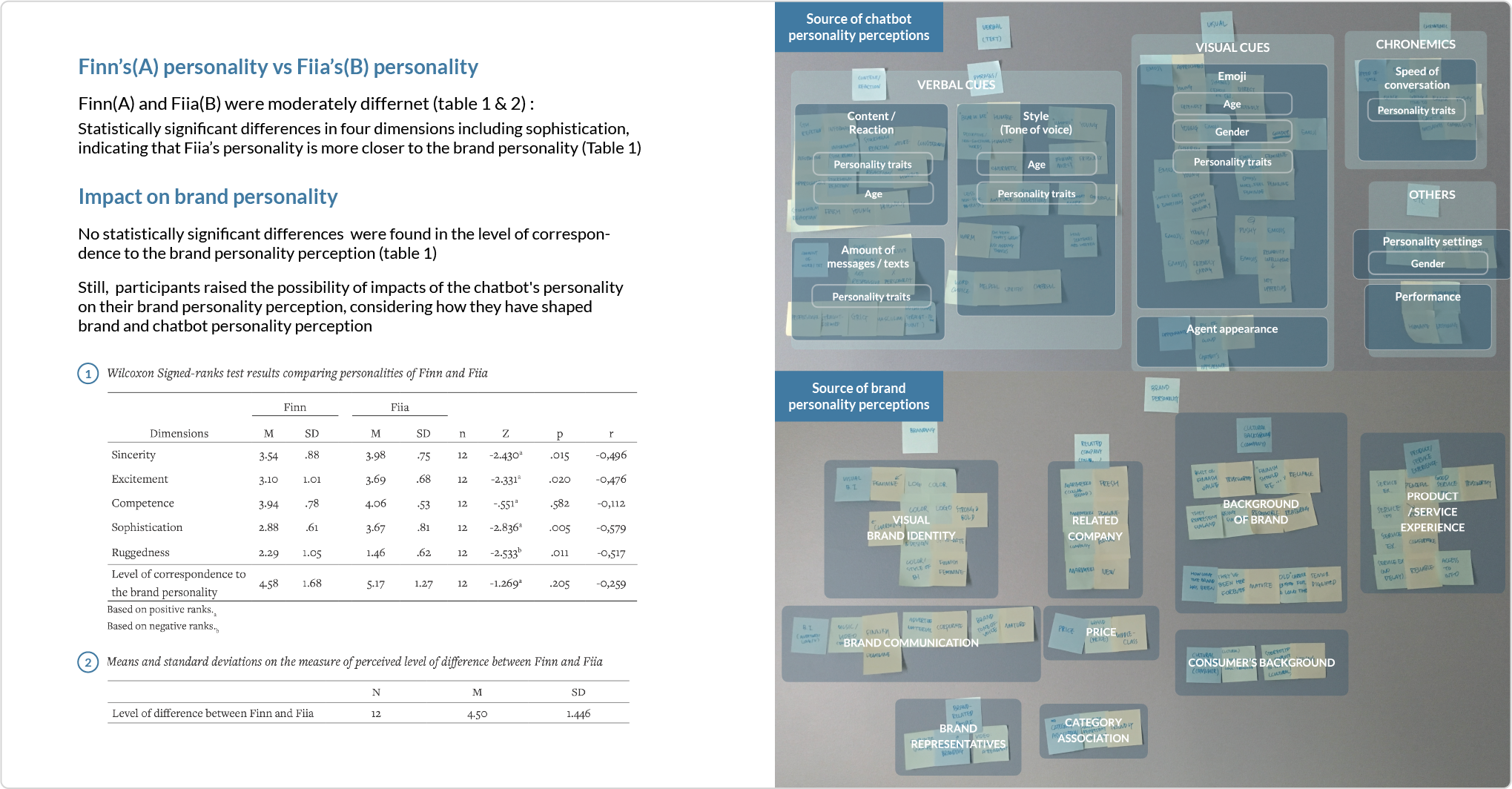
Summary of interview data analysis
DISCUSSION
Key Findings & Design Considerations
The study examined the impact of chatbot's personality on brand personality by investigating existing brands' and chatbots' personalities in a two-stage study design. The study findings confirmed and built on previous literature with empirical pieces of evidence.
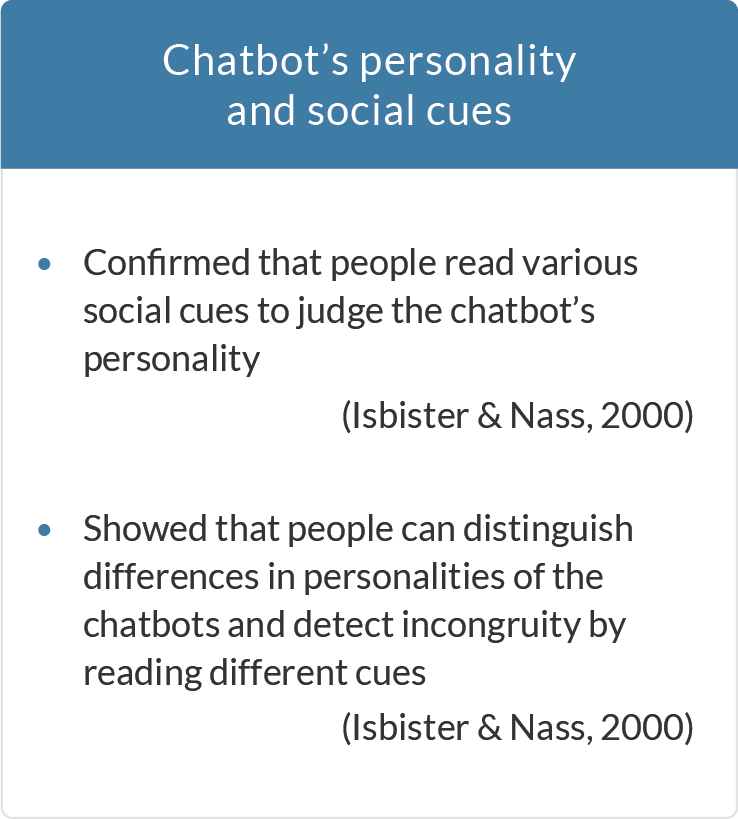
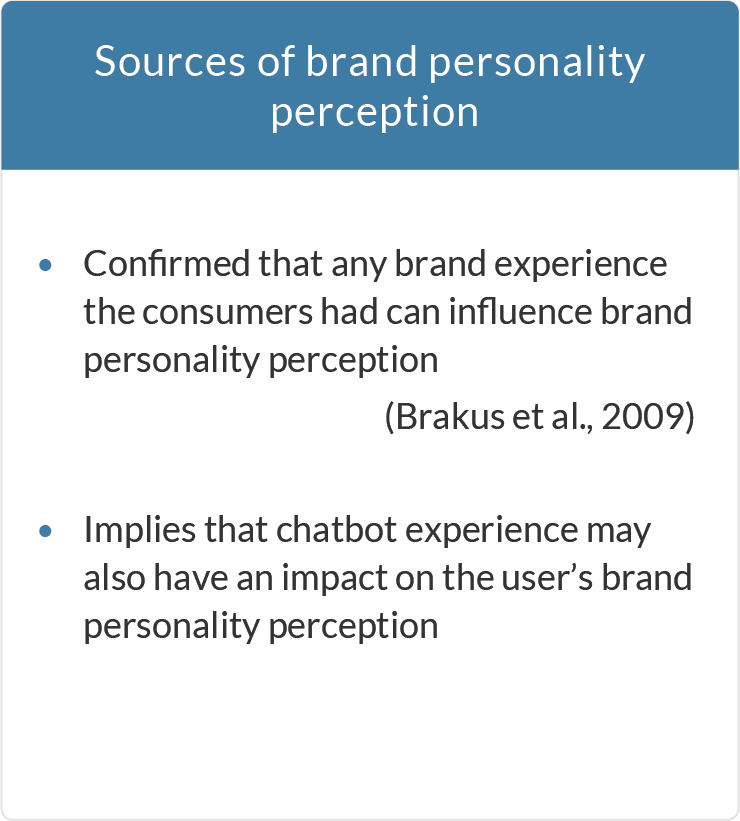
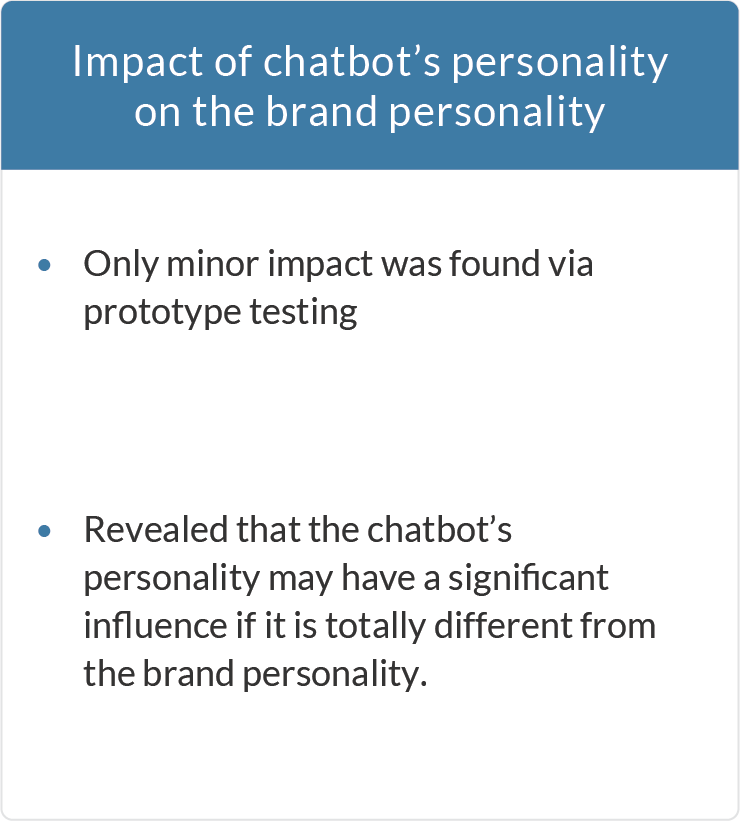
Summary of key findings of the study
Based on the study findings, a set of design considerations in designing brand chatbots are suggested:
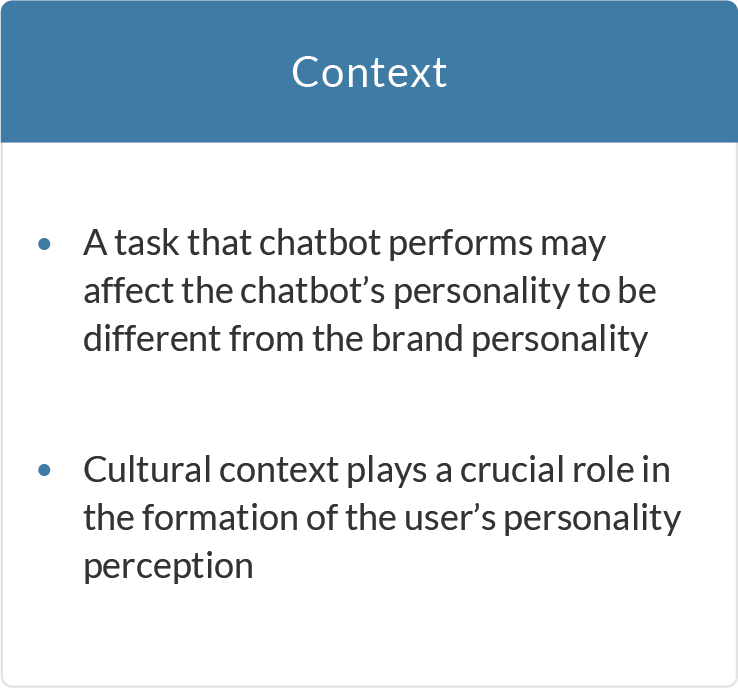
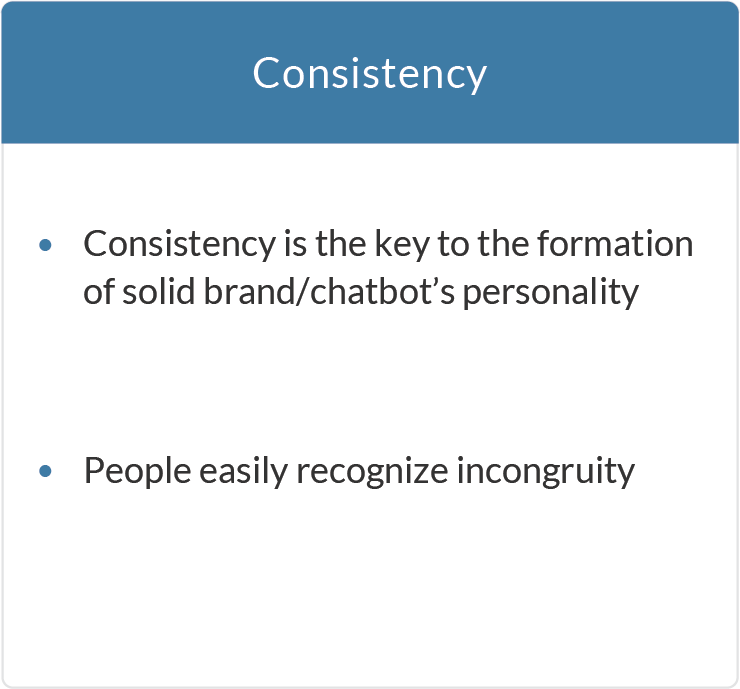

Summary of design considerations for brand chatbots
